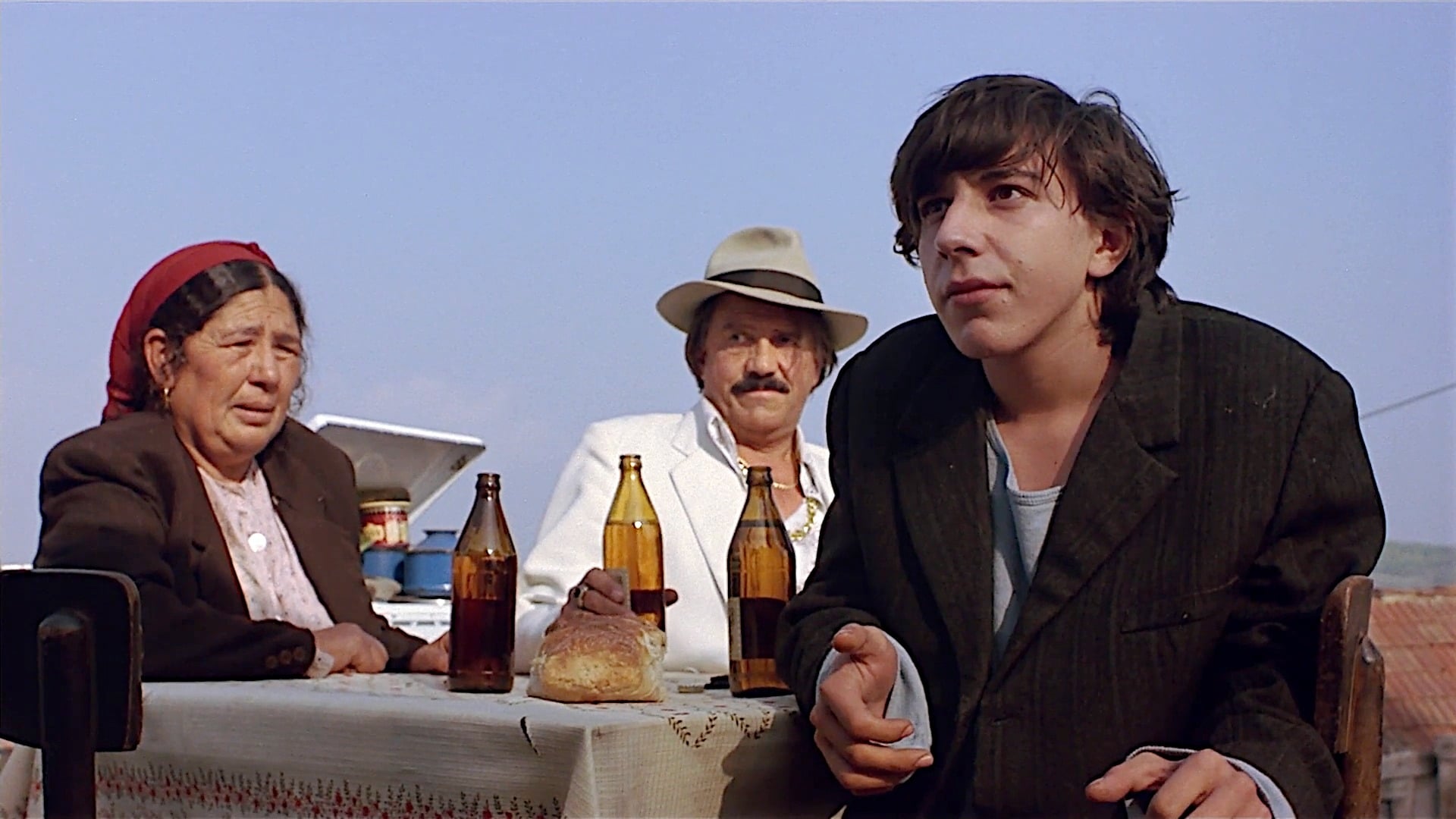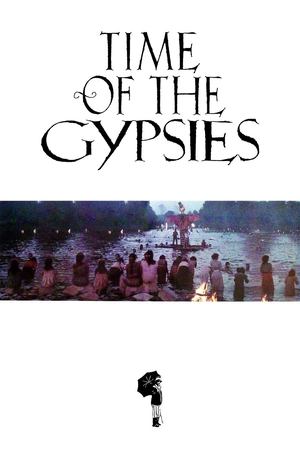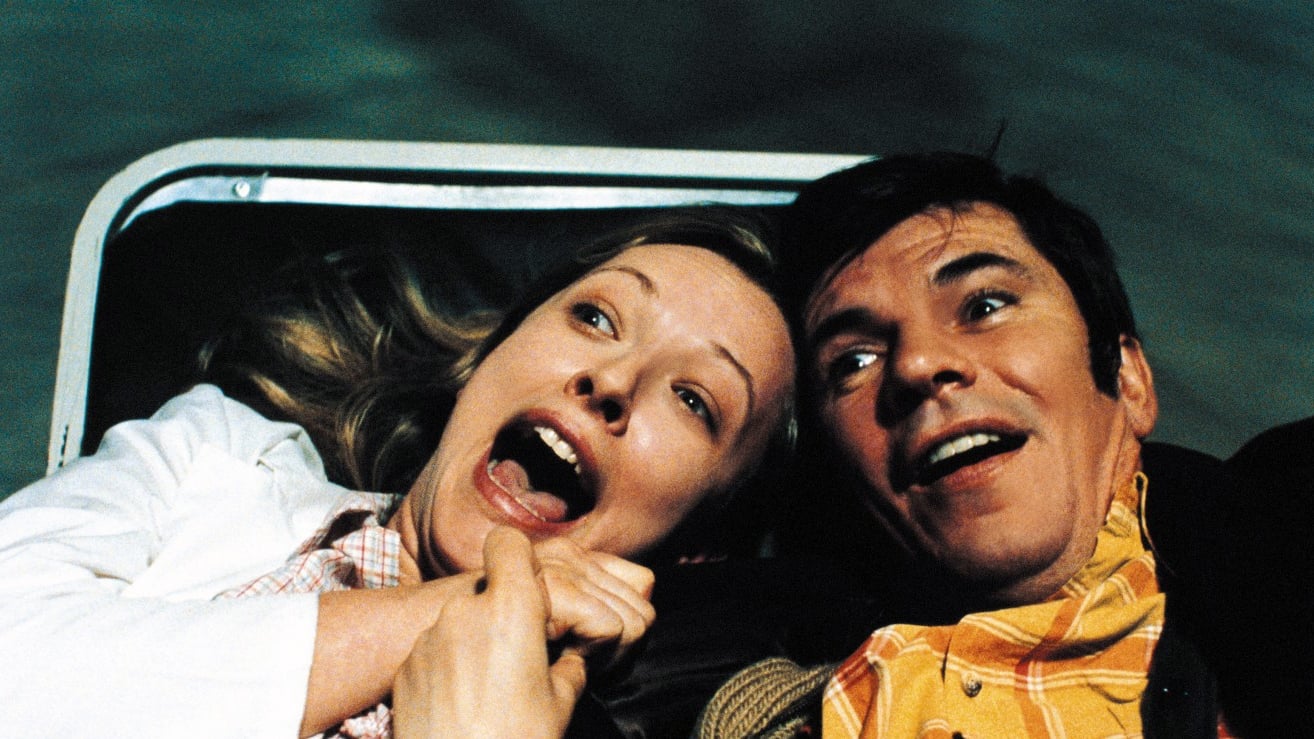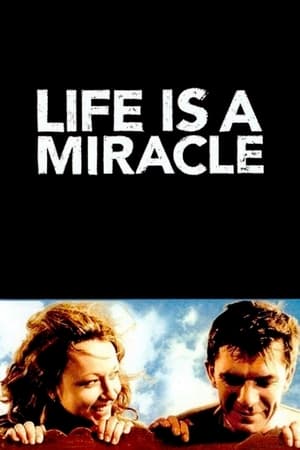Emir Kusturica is a Bosnian filmmaker known for his distinctive and visually striking films that often explore themes of identity, history, and culture. Here are three of his best films and an introduction to each:
“Underground” (1995): This epic film is a darkly comic satire of Yugoslavia’s turbulent history, following the lives of two friends from World War II to the Balkan conflicts of the 1990s.
The film features Kusturica’s signature blend of surrealism and magical realism, and its bold visual style earned it the Palme d’Or at the Cannes Film Festival.
“Black Cat, White Cat” (1998): This raucous comedy is a celebration of Romani culture, following the misadventures of a pair of lovable gangsters in a small Serbian village.
The film is filled with music, dance, and slapstick humor, and its exuberant energy makes it a crowd-pleaser that has become a fan favorite.
“Time of the Gypsies” (1988): This haunting drama follows a young Romani boy named Perhan as he tries to escape poverty and violence in his home village.
The film is a poignant exploration of identity and the struggle for autonomy, and it features Kusturica’s characteristic blend of magic and realism.
Emir Kusturica is a filmmaker with a unique voice and a powerful visual style that make his films stand out from the crowd.
Best Emir Kusturica Movies
Whether you’re drawn to his surrealism, his humor, or his exploration of culture and identity, there is something in Kusturica’s films that is sure to resonate with you.
1. Time of the Gypsies (1988)


Time of the Gypsies
1988 • 2h 22min • ★ 7.7/10 • Italy
Directed by: Emir Kusturica
Cast: Davor Dujmović, Borivoje Todorović, Ljubica Adžović, Husnija Hasimovic, Sinolichka Trpkova
In this luminous tale set in the former Yugoslavia, Perhan, an engaging young Romany with telekinetic powers, is seduced by the quick-cash world of petty crime that threatens to destroy him and those he loves.
“Time of the Gypsies” (also known as “Dom za vesanje” in the original Serbo-Croatian language) is a 1988 film directed by Serbian filmmaker Emir Kusturica.
The film follows the life of a young Roma boy named Perhan, who lives in a small village in Yugoslavia and dreams of a better life.
The film explores themes of identity, tradition, and the clash of cultures, as Perhan navigates his way through a world that is often hostile to the Roma community.
The film is notable for its vivid depiction of Roma culture and for its use of magical realism and surreal imagery.
“Time of the Gypsies” received critical acclaim upon its release and won the best director award at the Cannes Film Festival.
The film has been praised for its powerful storytelling, memorable characters, and striking visual style. It is widely regarded as one of Kusturica’s best films, and a classic of European cinema.
- Time of the Gypsies (1988) ( Dom za vesanje )
- Time of the Gypsies (1988)
- Dom za vesanje
- Davor Dujmovic, Bora Todorovic, Ljubica Adzovic (Actors)
- Emir Kusturica (Director) - Time of the Gypsies (1988) ( Dom za vesanje ) (Producer)
2. Underground (1995)
“Underground” is a 1995 film directed by Emir Kusturica, a prominent Serbian filmmaker. The film follows the story of two friends, Marko and Blacky, who are part of a group of Yugoslavian communists who go underground during World War II to fight against the German occupation.
However, as the war ends and Yugoslavia moves into the Cold War era, the group finds itself caught up in a web of lies, deceit, and betrayal that ultimately tears them apart.
The film is known for its surreal and allegorical style, as well as its exploration of themes of nationalism, identity, and political extremism.
“Underground” is a complex and multilayered film that draws on a wide range of historical and cultural references, including the Yugoslavian Civil War, the Cold War, and the collapse of the Soviet Union.
If you like Emir Kusturica’s work, on our sister site AuteurGraph we have a profile page, a visual film timeline, and a ratings page that gives a tonne of info and data about their career in a visualized form.
Overall, “Underground” is a powerful and thought-provoking film that offers a unique and insightful commentary on the complexities of politics and society in the modern world.
It is a must-see for fans of Emir Kusturica’s work and anyone interested in exploring the intersection of history, politics, and art.
- Amazon Prime Video (Video on Demand)
- Miki Manojlovic, Lazar Ristovski, Mirjana Jokovic (Actors)
- Emir Kusturica (Director) - Emir Kusturica (Writer) - Karl Baumgartner (Producer)
- English (Playback Language)
- English (Subtitle)
3. When Father Was Away On Business (1985)
“When Father Was Away On Business” is a 1985 Yugoslavian drama film directed by Emir Kusturica.
The movie is set in 1950s Yugoslavia and tells the story of a young boy named Malik, whose father is sent away to a labor camp on false charges of political dissent.
The film explores the themes of family, loyalty, betrayal, and the impact of political repression on individuals and their relationships.
The film was highly acclaimed by critics and audiences, winning the Palme d’Or at the 1985 Cannes Film Festival, and receiving an Academy Award nomination for Best Foreign Language Film.
The movie is known for its powerful storytelling, striking visuals, and the raw and honest portrayal of its characters.
“When Father Was Away On Business” is considered one of the most important films in Yugoslavian cinema, as it portrays the turbulent political and social climate of the country during the 1950s, under the communist regime of Josip Broz Tito.
The film also established Kusturica as one of the most significant filmmakers of his generation, and it remains a classic of European cinema.
- Factory sealed DVD
- Moreno D'E Bartolli, Miki Manojlovic, Mirjana Karanovic (Actors)
- Emir Kusturica (Director) - Abdulah Sidran (Writer)
- English (Subtitle)
- English (Publication Language)
4. Black Cat, White Cat (1998)
“Black Cat, White Cat” (Serbian: “Crna mačka, beli mačor”) is a 1998 Serbian romantic comedy directed by Emir Kusturica.
The film tells the story of two rival gangs, one led by a wealthy man and the other by a poor smuggler, and the chaotic events that unfold when the two gangs come together.
The film is known for its lively, colorful depiction of life in the Balkans, as well as its quirky, offbeat sense of humor.
It features a large ensemble cast of eccentric characters, including a kleptomaniac dwarf, a village idiot with a magical ability to fix car engines, and a young couple trying to elope despite their families’ objections.
“Black Cat, White Cat” is also notable for its use of Romani music and culture, as well as its exploration of themes of love, family, and tradition.
The film has been praised for its infectious energy and its ability to capture the spirit of the Balkans, as well as its strong performances and inventive storytelling.
Overall, “Black Cat, White Cat” is a delightful, feel-good film that is sure to leave viewers with a smile on their faces.
It is a testament to the power of cinema to bring people together and to celebrate the joy of life in all its chaotic, unpredictable glory.
- Amazon Prime Video (Video on Demand)
- Bajram Severdzan, Srdjan 'Zika' Todorovic, Branka Katic (Actors)
- Emir Kusturica (Director) - Gordan Mihic (Writer) - Karl Baumgartner (Producer)
- English (Playback Language)
- English (Subtitle)
5. Arizona Dream (1993)
“Arizona Dream” is a 1993 surrealist comedy-drama film directed by Emir Kusturica.
The film tells the story of a young New Yorker, Axel Blackmar (played by Johnny Depp), who goes to Arizona to attend the wedding of his uncle, Leo (played by Jerry Lewis), and becomes involved with a series of eccentric characters.
One of the main characteristics of “Arizona Dream” is its use of magical realism and surrealism to explore themes of love, death, and the meaning of life.
The film features dreamlike sequences, bizarre imagery, and a nonlinear narrative that blurs the lines between reality and fantasy.
Another characteristic of “Arizona Dream” is its eclectic soundtrack, which features a mix of classic and contemporary music from a variety of genres and cultures.
The music helps to create a sense of place and atmosphere, and adds to the film’s dreamlike quality.
The film also features strong performances from its cast, including Johnny Depp, Faye Dunaway, and Jerry Lewis, who all bring a sense of whimsy and energy to their roles.
The characters they play are quirky, charming, and often bizarre, but they are also relatable and human.
Overall, “Arizona Dream” is a unique and memorable film that invites viewers to explore the mysteries of life and the human experience.
It is a film that celebrates the power of imagination and the magic of storytelling, and encourages us to embrace the unexpected and the unknown.
- Amazon Prime Video (Video on Demand)
- Johnny Depp, Jerry Lewis, Faye Dunaway (Actors)
- Emir Kusturica (Director) - David Atkins (Writer) - Yves Harmion (Producer)
- English (Playback Language)
- English (Subtitle)
6. Life is a Miracle (2004)


Life Is a Miracle
2004 • 2h 35min • ★ 7.3/10 • France
Directed by: Emir Kusturica
Cast: Slavko Štimac, Nataša Tapušković, Vesna Trivalić, Vuk Kostić, Aleksandar Berček
Set during the Bosnian war in the early 1990s, Luka is a mild-mannered railway clerk whose life is turned upside down, not just by the outbreak of the war, but when his wife runs off with a local musician. Then Luka's son is conscripted and eventually captured in the fighting. To recover his son, Luka is commanded to guard a pretty young Muslim nurse who will be used in a hostage swapping operation.
“Life is a Miracle” is a 2004 film directed by Emir Kusturica, set against the backdrop of the Bosnian War.
The film tells the story of a Serbian engineer named Luka who falls in love with a Bosniak woman named Sabaha, despite the conflict between their two communities. Here are three reasons why you should watch “Life is a Miracle”:
Powerful commentary on war: “Life is a Miracle” provides a moving and powerful commentary on the senselessness of war and the way that it tears apart communities and families.
The film portrays the absurdity of the conflict in Bosnia and the devastating impact it has on ordinary people, while also highlighting the potential for love and human connection to transcend political and cultural differences.
Emir Kusturica’s signature style: As with all of Kusturica’s films, “Life is a Miracle” features the director’s signature blend of humor, magic, and surrealism.
The movie is filled with colorful characters, lively music, and visually stunning sequences that bring to life the film’s themes of love and hope amidst tragedy.
Outstanding performances: The film features strong performances from its lead actors, Slavko Stimac and Vesna Trivalic, who bring depth and nuance to their roles as Luka and Sabaha.
The chemistry between the two leads is palpable and adds a sense of poignancy to the film’s themes of love and connection.
Overall, “Life is a Miracle” is a moving and visually stunning film that explores the power of love and connection in the face of tragedy and conflict.
It is a poignant commentary on the futility of war and the resilience of the human spirit, and a testament to Kusturica’s skill as a filmmaker.
If you are a fan of Kusturica’s unique style and thoughtful storytelling, “Life is a Miracle” is a film you won’t want to miss.
No products found.
7. Do You Remember Dolly Bell? (1981)
“Do You Remember Dolly Bell?” is a 1981 film directed by Emir Kusturica, a Serbian filmmaker known for his unique style and exploration of themes related to Balkan culture and identity.
The film is set in Sarajevo in the 1960s and follows the coming-of-age story of a young man named Dino, played by Slavko Stimac.
The film explores the challenges of growing up in a rapidly changing society, as Dino navigates his way through his first love, family conflicts, and the pressures of a changing cultural landscape.
The film is notable for its vivid portrayal of life in Sarajevo during this period, as well as its use of humor, music, and visual imagery.
“Do You Remember Dolly Bell?” was Kusturica’s first feature-length film and won the Silver Lion award at the Venice Film Festival.
The film is widely regarded as a classic of Yugoslav cinema and as an important milestone in Kusturica’s career.
It is a must-see for anyone interested in the culture and history of the Balkans, as well as for fans of Kusturica’s unique style and sensibility.
- Factory sealed DVD
- Slavko Stimac, Slobodan Aligrudic, Ljiljana Blagojevic (Actors)
- Emir Kusturica (Director)
- English (Subtitle)
- English (Publication Language)
8. Super 8 Stories (2001)
“Super 8 Stories” is a 2001 documentary film directed by Emir Kusturica, a prominent Serbian filmmaker.
The film follows Kusturica as he travels through the Balkans, exploring the history, culture, and people of the region.
The film is structured around Kusturica’s memories of his childhood, which he recorded on Super 8 film.
The documentary is known for its vibrant and colorful depiction of the Balkans, as well as its exploration of themes of memory, identity, and cultural diversity.
The film features a mix of historical footage, interviews with local people, and Kusturica’s own reflections on his childhood and his experiences in the region.
Overall, “Super 8 Stories” is a highly engaging and entertaining documentary that offers a unique and insightful look at the Balkans and its people.
With its mix of humor, nostalgia, and cultural commentary, it is a must-see for fans of Emir Kusturica’s work and anyone interested in exploring the complexities of identity and culture in the modern world.
- Grande (47x63)
- Unframed
- Folded
- Please note sizes are approximate and stated in inches. The actual size can vary by an inch or more....
- We are always happy to provide a detailed condition report as well as additional images of the item...
9. Promise Me This (2007)
“Promise Me This” is a 2007 Serbian comedy-drama film directed by Emir Kusturica. The movie tells the story of a young man named Tsane, who travels to his grandfather’s remote village to fulfill a promise he made to him on his deathbed.
In the village, Tsane meets a colorful cast of characters and becomes involved in their lives, ultimately learning important lessons about family, love, and the meaning of life.
The film received mixed reviews, with some critics praising its vivid visuals, humor, and heartfelt story, while others criticized its use of caricatured characters and lack of subtlety.
The film features Kusturica’s signature style, with surreal and often fantastical elements blended with realistic depictions of village life in Serbia.
“Promise Me This” is notable for its use of music, with a soundtrack featuring traditional Serbian songs and music by Kusturica’s own band, The No Smoking Orchestra.
The film also features a strong ensemble cast of Serbian actors, including Uros Milovanovic, Marija Petronijevic, and Aleksandar Bercek.
- Gohlke, Cathy (Author)
- English (Publication Language)
- 416 Pages - 02/01/2012 (Publication Date) - Tyndale Fiction (Publisher)
10. Maradona (2008)
“Maradona” is a 2008 documentary film about the life and career of legendary Argentine soccer player Diego Maradona, directed by Serbian filmmaker Emir Kusturica.
The film follows Maradona through his rise to fame as a young soccer star in Argentina, his controversial years playing in Europe, and his tumultuous personal life off the field.
The film is notable for its intimate, behind-the-scenes look at Maradona’s life, as well as its use of rare archival footage and interviews with the soccer star’s family, friends, and teammates.
It explores the complex, often contradictory nature of Maradona’s personality, as well as his struggles with addiction, health issues, and legal problems.
“Maradona” is a powerful and emotional portrait of one of the greatest soccer players of all time, as well as a fascinating exploration of the cultural and political context that shaped his life and career.
The film has been praised for its insightful, sensitive portrayal of Maradona, as well as its expertly crafted narrative and stunning visuals.
Overall, “Maradona” is a must-see for soccer fans, as well as anyone interested in exploring the life and legacy of one of the most iconic and controversial sports figures of the 20th century.
- Amazon Prime Video (Video on Demand)
- Nazareno Casero, Nazareno Casero, Nicolas Goldschmidt (Actors)
- Alejandro Aimetta (Director) - Alejandro Aimetta (Writer) - Francisco Cordero (Producer)
11. On the Milky Road (2016)
“On the Milky Road” is a 2016 romantic drama film directed by Emir Kusturica, who also stars in the film alongside Monica Bellucci.
The film tells the story of a Serbian milkman, Kosta, who falls in love with a beautiful Italian woman, and their struggles to stay together in the midst of war and political turmoil.
One of the main characteristics of “On the Milky Road” is its use of magical realism and surrealism to explore the themes of love, war, and destiny.
The film features dreamlike sequences and fantastical imagery that blur the lines between reality and fantasy. This creates a poetic and evocative atmosphere that adds to the film’s emotional impact.
Another characteristic of the film is its exploration of the impact of war on the lives of ordinary people.
The film portrays the devastation of war and the ways in which it affects the lives of individuals and communities, as well as the resilience and determination of people to survive and overcome the challenges they face.
The film also features strong performances from its cast, especially Kusturica and Bellucci, who bring depth and nuance to their roles.
The chemistry between the two leads is palpable and their love story is both romantic and tragic.
Overall, “On the Milky Road” is a powerful and haunting film that invites viewers to reflect on the fragility of life, the power of love, and the resilience of the human spirit.
It is a film that celebrates the beauty of life in the face of tragedy and loss, and reminds us of the importance of hope and perseverance.
3 Characteristics of Emir Kusturica Films
Emir Kusturica is a highly regarded Bosnian filmmaker with a distinct style that sets him apart from other directors. Here are three characteristics of Kusturica’s films:
Magical realism: Kusturica’s films often feature elements of magical realism, blending the fantastical with the real.
For example, in “Black Cat, White Cat,” a cat that has been painted black and white creates chaos as it jumps from one side to the other, symbolizing the divided identities of the characters. This surrealism creates a unique and dreamlike atmosphere that is a hallmark of Kusturica’s style.
Exuberant energy: Kusturica’s films are known for their exuberant energy, often featuring lively music, dance, and colorful characters.
The filmmaker celebrates life and love amidst the struggles and turmoil of war and poverty, imbuing his films with a sense of joy and vitality that is infectious.
Social commentary: Despite their light and playful tone, Kusturica’s films often contain powerful social commentary.
Through his characters and stories, Kusturica explores themes of identity, history, and cultural conflict, providing insights into the complexities of the Balkan region and its people.
His films often highlight the absurdity of war and the impact of political turmoil on ordinary people, providing a unique perspective on these important issues.
Overall, Emir Kusturica’s films are characterized by their unique blend of magical realism, exuberant energy, and social commentary.
These elements work together to create films that are both visually striking and intellectually engaging, showcasing the filmmaker’s skill and distinct style.
3 Reasons Why You Should Watch Emir Kusturica Films
Emir Kusturica is a renowned filmmaker known for his unique style and exploration of themes related to Balkan culture and identity. Here are three reasons why you should watch his films:
Unique cinematic style: Kusturica’s films are characterized by a distinctive visual style that combines realism and surrealism, humor and tragedy, and a mix of different cultural influences.
His films often feature vivid imagery, unusual camera angles, and an eclectic soundtrack that includes both traditional and contemporary music.
Exploration of Balkan culture and identity: Kusturica’s films often explore the complexities of Balkan culture and identity, and the challenges of navigating a rapidly changing world.
His films are filled with memorable characters and stories that reflect the struggles and joys of life in the Balkans, and offer insights into the region’s rich history and cultural heritage.
Award-winning films: Kusturica’s films have been widely acclaimed and have won numerous awards at major film festivals, including the Palme d’Or at the Cannes Film Festival, the Silver Lion at the Venice Film Festival, and the Best Director award at the Cannes Film Festival.
His films have been praised for their powerful storytelling, memorable characters, and striking visual style, and are considered to be some of the most important works of Balkan cinema.
Best Emir Kusturica Films – Wrapping Up
Emir Kusturica is a renowned Serbian filmmaker who has won numerous awards for his unique and visually stunning films. Here are some of his best films:
“Underground” (1995) – A surreal and allegorical exploration of Yugoslavia’s complex history and politics.
“Time of the Gypsies” (1988) – A coming-of-age story about a young Romani boy growing up in Belgrade.
“Arizona Dream” (1993) – A surreal and darkly comedic exploration of the American Dream and the search for meaning in life.
“Black Cat, White Cat” (1998) – A vibrant and energetic comedy about two rival Romani families in Serbia.
“When Father Was Away on Business” (1985) – A poignant and powerful drama about a young boy growing up in Communist Yugoslavia.
Kusturica’s films are known for their mix of humor, drama, and social commentary, as well as their unique visual style and exploration of cultural diversity.
His work has been praised for its ability to blend history, politics, and personal stories into captivating and thought-provoking films that offer unique insights into the complexities of the modern world.


![Time of the Gypsies (1988) ( Dom za vesanje ) [ NON-USA FORMAT, PAL, Reg.2 Import - Sweden ]](https://m.media-amazon.com/images/I/51HL7UfP2TL.jpg)













